Entry Database : PDB / ID : 3jpyTitle Crystal structure of the zinc-bound amino terminal domain of the NMDA receptor subunit NR2B Glutamate [NMDA] receptor subunit epsilon-2 Keywords / / / / / / / / / / / / / / / / Function / homology Function Domain/homology Component
/ / / / / / / / / / / / / / / / / / / / / / / / / / / / / / / / / / / / / / / / / / / / / / / / / / / / / / / / / / / / / / / / / / / / / / / / / / / / / / / / / / / / / / / / / / / / / / / / / / / / / / / / / / / / / / / / / / / / / / / / / / / / / / / / / / / / / Biological species Rattus norvegicus (Norway rat)Method / / / Resolution : 3.209 Å Authors Karakas, E. / Simorowski, N. / Furukawa, H. Journal : Embo J. / Year : 2009Title : Structure of the zinc-bound amino-terminal domain of the NMDA receptor NR2B subunit.Authors : Karakas, E. / Simorowski, N. / Furukawa, H. History Deposition Sep 4, 2009 Deposition site / Processing site Revision 1.0 Dec 8, 2009 Provider / Type Revision 1.1 Jul 13, 2011 Group / Version format complianceRevision 1.2 Jul 29, 2020 Group Advisory / Data collection ... Advisory / Data collection / Derived calculations / Structure summary Category chem_comp / database_PDB_caveat ... chem_comp / database_PDB_caveat / entity / pdbx_chem_comp_identifier / pdbx_entity_nonpoly / struct_conn / struct_conn_type / struct_site / struct_site_gen Item _chem_comp.name / _chem_comp.type ... _chem_comp.name / _chem_comp.type / _entity.pdbx_description / _pdbx_entity_nonpoly.name / _struct_conn.conn_type_id / _struct_conn.id / _struct_conn.pdbx_dist_value / _struct_conn.pdbx_leaving_atom_flag / _struct_conn.pdbx_role / _struct_conn.ptnr1_auth_comp_id / _struct_conn.ptnr1_auth_seq_id / _struct_conn.ptnr1_label_atom_id / _struct_conn.ptnr1_label_comp_id / _struct_conn.ptnr1_label_seq_id / _struct_conn.ptnr2_auth_comp_id / _struct_conn.ptnr2_auth_seq_id / _struct_conn.ptnr2_label_asym_id / _struct_conn.ptnr2_label_atom_id / _struct_conn.ptnr2_label_comp_id / _struct_conn_type.id Description / Provider / Type Revision 1.3 Oct 13, 2021 Group / Structure summary / Category / database_2 / struct_ref_seq_difItem _chem_comp.pdbx_synonyms / _database_2.pdbx_DOI ... _chem_comp.pdbx_synonyms / _database_2.pdbx_DOI / _database_2.pdbx_database_accession / _struct_ref_seq_dif.details Revision 1.4 Sep 6, 2023 Group / Refinement descriptionCategory / chem_comp_bond / pdbx_initial_refinement_modelRevision 1.5 Nov 27, 2024 Group / Category / pdbx_modification_feature
Show all Show less
 Yorodumi
Yorodumi Open data
Open data Basic information
Basic information Components
Components Keywords
Keywords Function and homology information
Function and homology information
 X-RAY DIFFRACTION /
X-RAY DIFFRACTION /  SYNCHROTRON /
SYNCHROTRON /  MOLECULAR REPLACEMENT / Resolution: 3.209 Å
MOLECULAR REPLACEMENT / Resolution: 3.209 Å  Authors
Authors Citation
Citation Journal: Embo J. / Year: 2009
Journal: Embo J. / Year: 2009 Structure visualization
Structure visualization Molmil
Molmil Jmol/JSmol
Jmol/JSmol Downloads & links
Downloads & links Download
Download 3jpy.cif.gz
3jpy.cif.gz PDBx/mmCIF format
PDBx/mmCIF format pdb3jpy.ent.gz
pdb3jpy.ent.gz PDB format
PDB format 3jpy.json.gz
3jpy.json.gz PDBx/mmJSON format
PDBx/mmJSON format Other downloads
Other downloads 3jpy_validation.pdf.gz
3jpy_validation.pdf.gz wwPDB validaton report
wwPDB validaton report 3jpy_full_validation.pdf.gz
3jpy_full_validation.pdf.gz 3jpy_validation.xml.gz
3jpy_validation.xml.gz 3jpy_validation.cif.gz
3jpy_validation.cif.gz https://data.pdbj.org/pub/pdb/validation_reports/jp/3jpy
https://data.pdbj.org/pub/pdb/validation_reports/jp/3jpy ftp://data.pdbj.org/pub/pdb/validation_reports/jp/3jpy
ftp://data.pdbj.org/pub/pdb/validation_reports/jp/3jpy
 Links
Links Assembly
Assembly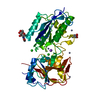
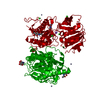
 Components
Components


 Trichoplusia ni (cabbage looper) / References: UniProt: Q00960
Trichoplusia ni (cabbage looper) / References: UniProt: Q00960






 X-RAY DIFFRACTION / Number of used crystals: 1
X-RAY DIFFRACTION / Number of used crystals: 1  Sample preparation
Sample preparation SYNCHROTRON / Site:
SYNCHROTRON / Site:  NSLS
NSLS  / Beamline: X25 / Wavelength: 1.2826 Å
/ Beamline: X25 / Wavelength: 1.2826 Å Processing
Processing MOLECULAR REPLACEMENT
MOLECULAR REPLACEMENT Movie
Movie Controller
Controller


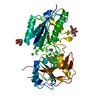


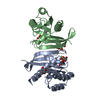
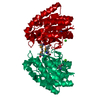
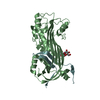
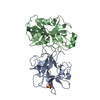
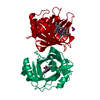
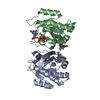
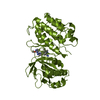
 PDBj
PDBj







